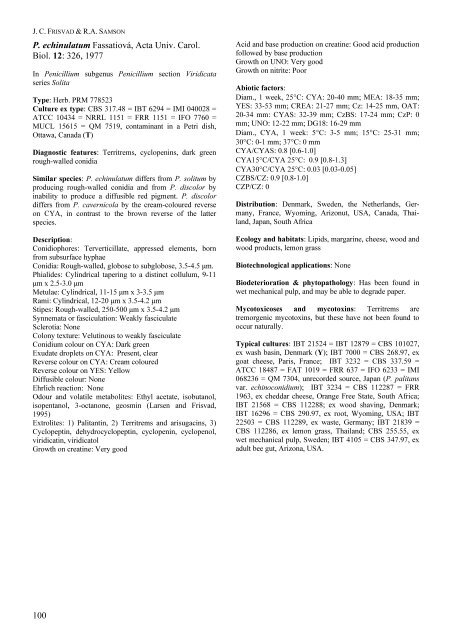Fig. 46. Penicillium digitatum. 7-day old colonies on A. CYA, B ... - CBS
Fig. 46. Penicillium digitatum. 7-day old colonies on A. CYA, B ... - CBS
Fig. 46. Penicillium digitatum. 7-day old colonies on A. CYA, B ... - CBS
Create successful ePaper yourself
Turn your PDF publications into a flip-book with our unique Google optimized e-Paper software.
J. C. FRISVAD &R.A.SAMSON<br />
P. echinulatum Fassatiová, Acta Univ. Carol.<br />
Biol. 12: 326, 1977<br />
In <str<strong>on</strong>g>Penicillium</str<strong>on</strong>g> subgenus <str<strong>on</strong>g>Penicillium</str<strong>on</strong>g> secti<strong>on</strong> Viridicata<br />
series Solita<br />
Type: Herb. PRM 778523<br />
Culture ex type: <strong>CBS</strong> 317.48 = IBT 6294 = IMI 040028 =<br />
ATCC 10434 = NRRL 1151 = FRR 1151 = IFO 7760 =<br />
MUCL 15615 = QM 7519, c<strong>on</strong>taminant in a Petri dish,<br />
Ottawa, Canada (T)<br />
Diagnostic features: Territrems, cyclopenins, dark green<br />
rough-walled c<strong>on</strong>idia<br />
Similar species: P. echinulatum differs from P. solitum by<br />
producing rough-walled c<strong>on</strong>idia and from P. discolor by<br />
inability to produce a diffusible red pigment. P. discolor<br />
differs from P. cavernicola by the cream-coloured reverse<br />
<strong>on</strong> <strong>CYA</strong>, in c<strong>on</strong>trast to the brown reverse of the latter<br />
species.<br />
Descripti<strong>on</strong>:<br />
C<strong>on</strong>idiophores: Terverticillate, appressed elements, born<br />
from subsurface hyphae<br />
C<strong>on</strong>idia: Rough-walled, globose to subglobose, 3.5-4.5 μm.<br />
Phialides: Cylindrical tapering to a distinct collulum, 9-11<br />
μm x 2.5-3.0 μm<br />
Metulae: Cylindrical, 11-15 μm x 3-3.5 μm<br />
Rami: Cylindrical, 12-20 μm x 3.5-4.2 μm<br />
Stipes: Rough-walled, 250-500 μm x 3.5-4.2 μm<br />
Synnemata or fasciculati<strong>on</strong>: Weakly fasciculate<br />
Sclerotia: N<strong>on</strong>e<br />
Col<strong>on</strong>y texture: Velutinous to weakly fasciculate<br />
C<strong>on</strong>idium colour <strong>on</strong> <strong>CYA</strong>: Dark green<br />
Exudate droplets <strong>on</strong> <strong>CYA</strong>: Present, clear<br />
Reverse colour <strong>on</strong> <strong>CYA</strong>: Cream coloured<br />
Reverse colour <strong>on</strong> YES: Yellow<br />
Diffusible colour: N<strong>on</strong>e<br />
Ehrlich reacti<strong>on</strong>: N<strong>on</strong>e<br />
Odour and volatile metabolites: Ethyl acetate, isobutanol,<br />
isopentanol, 3-octan<strong>on</strong>e, geosmin (Larsen and Frisvad,<br />
1995)<br />
Extrolites: 1) Palitantin, 2) Territrems and arisugacins, 3)<br />
Cyclopeptin, dehydrocyclopeptin, cyclopenin, cyclopenol,<br />
viridicatin, viridicatol<br />
Growth <strong>on</strong> creatine: Very good<br />
Acid and base producti<strong>on</strong> <strong>on</strong> creatine: Good acid producti<strong>on</strong><br />
followed by base producti<strong>on</strong><br />
Growth <strong>on</strong> UNO: Very good<br />
Growth <strong>on</strong> nitrite: Poor<br />
Abiotic factors:<br />
Diam., 1 week, 25°C: <strong>CYA</strong>: 20-40 mm; MEA: 18-35 mm;<br />
YES: 33-53 mm; CREA: 21-27 mm; Cz: 14-25 mm, OAT:<br />
20-34 mm: <strong>CYA</strong>S: 32-39 mm; CzBS: 17-24 mm; CzP: 0<br />
mm; UNO: 12-22 mm; DG18: 16-29 mm<br />
Diam., <strong>CYA</strong>, 1 week: 5°C: 3-5 mm; 15°C: 25-31 mm;<br />
30°C: 0-1 mm; 37°C: 0 mm<br />
<strong>CYA</strong>/<strong>CYA</strong>S: 0.8 [0.6-1.0]<br />
<strong>CYA</strong>15°C/<strong>CYA</strong> 25°C: 0.9 [0.8-1.3]<br />
<strong>CYA</strong>30°C/<strong>CYA</strong> 25°C: 0.03 [0.03-0.05]<br />
CZBS/CZ: 0.9 [0.8-1.0]<br />
CZP/CZ: 0<br />
Distributi<strong>on</strong>: Denmark, Sweden, the Netherlands, Germany,<br />
France, Wyoming, Ariz<strong>on</strong>ut, USA, Canada, Thailand,<br />
Japan, South Africa<br />
Ecology and habitats: Lipids, margarine, cheese, wood and<br />
wood products, lem<strong>on</strong> grass<br />
Biotechnological applicati<strong>on</strong>s: N<strong>on</strong>e<br />
Biodeteriorati<strong>on</strong> & phytopathology: Has been found in<br />
wet mechanical pulp, and may be able to degrade paper.<br />
Mycotoxicoses and mycotoxins: Territrems are<br />
tremorgenic mycotoxins, but these have not been found to<br />
occur naturally.<br />
Typical cultures: IBT 21524 = IBT 12879 = <strong>CBS</strong> 101027,<br />
ex wash basin, Denmark (Y); IBT 7000 = <strong>CBS</strong> 268.97, ex<br />
goat cheese, Paris, France; IBT 3232 = <strong>CBS</strong> 337.59 =<br />
ATCC 18487 = FAT 1019 = FRR 637 = IFO 6233 = IMI<br />
068236 = QM 7304, unrecorded source, Japan (P. palitans<br />
var. echinoc<strong>on</strong>idium); IBT 3234 = <strong>CBS</strong> 112287 = FRR<br />
1963, ex cheddar cheese, Orange Free State, South Africa;<br />
IBT 21568 = <strong>CBS</strong> 112288; ex wood shaving, Denmark;<br />
IBT 16296 = <strong>CBS</strong> 290.97, ex root, Wyoming, USA; IBT<br />
22503 = <strong>CBS</strong> 112289, ex waste, Germany; IBT 21839 =<br />
<strong>CBS</strong> 112286, ex lem<strong>on</strong> grass, Thailand; <strong>CBS</strong> 255.55, ex<br />
wet mechanical pulp, Sweden; IBT 4105 = <strong>CBS</strong> 347.97, ex<br />
adult bee gut, Ariz<strong>on</strong>a, USA.<br />
100

















